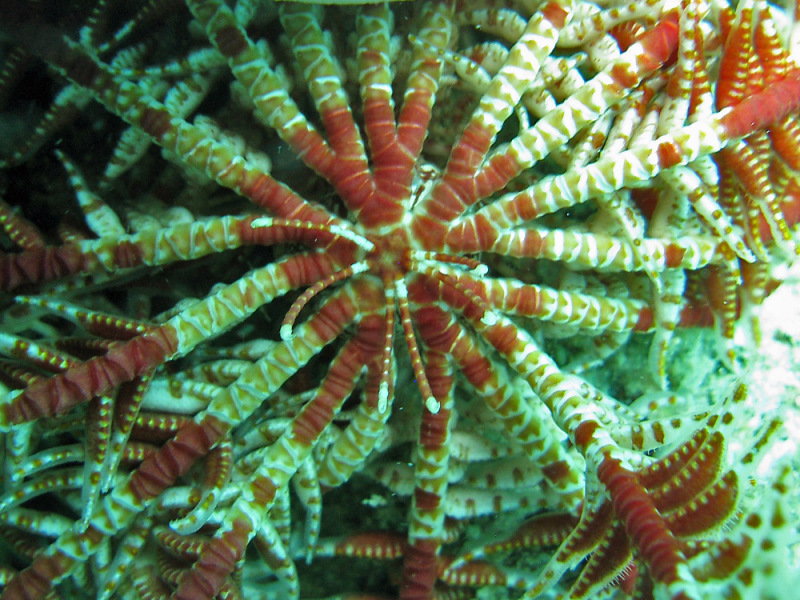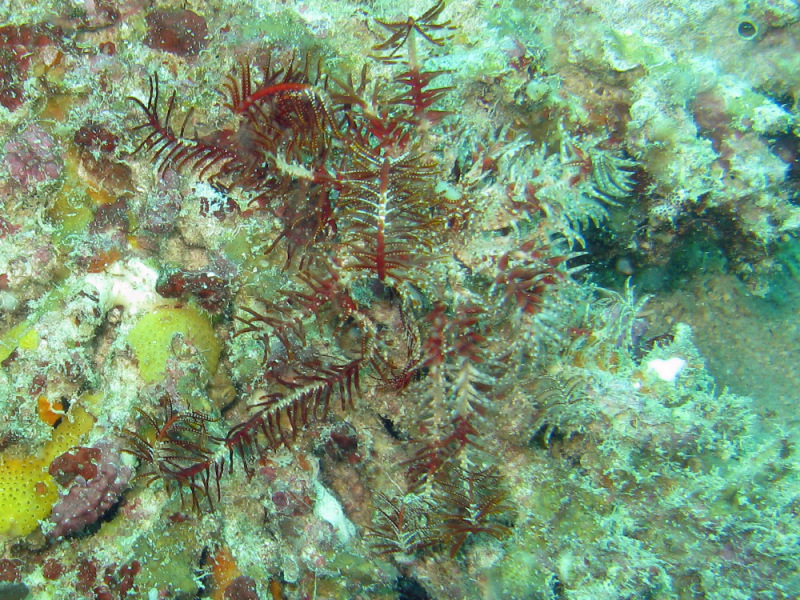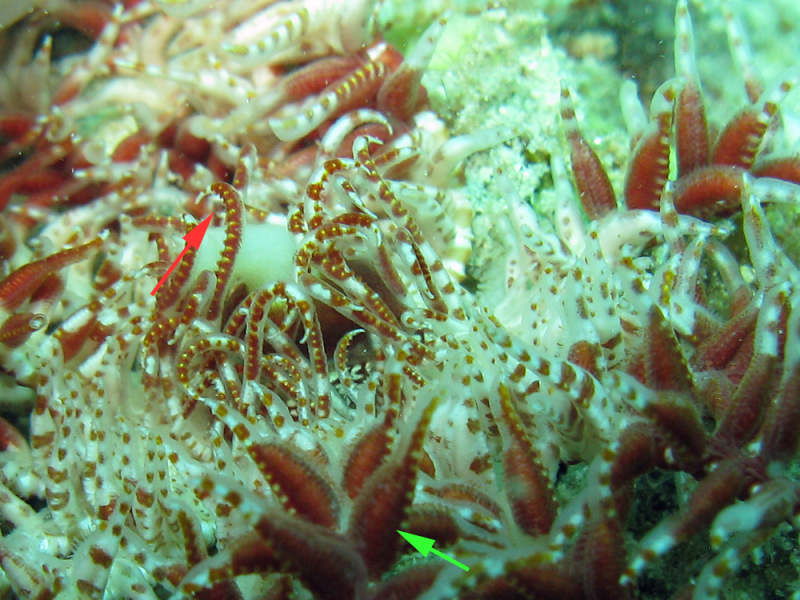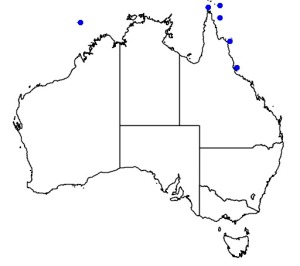
©Anne Hoggett: Underside of Clarkcomanthus comanthipinnus showing typical concentric banding colour pattern and few weak cirri.

©Anne Hoggett: Clarkcomanthus comanthipinnus at Lizard Island, under rubble slab at base of reef slope.

©Anne Hoggett: Central upper surface showing combed oral pinnules (red arrow) and swollen genital pinnules (green arrow) of Clarkcomanthus comanthipinnus at Lizard Island.
Colours
Distinguishing features
Comasterids are distinguised from all other featherstar families by having terminal segments of the oral pinnules modified to form a comb. Comasterids a also have a distinctive "feel" due to well developed hooks on most pinnules that cause them to cling like velcro.
Clarkcomanthus comanthipinnus is a small, delicate crinoid with up to 20 slender arms and a few weak cirri. Brachials and pinnules are quite spiny and tips of the combed pinnules have a sharp point.
There are two colour forms at Lizard Island that seem to have different living habits. One has bright red and white concentric banding on the under surface. This form is generally found on the reef slope or at its base and the animal is completely concealed during the day under rubble or within the reef. The other form is pale brown with an indistinct pale midline on the under arm surfaces. It is common on lagoon patch reefs and on the reef flat where it usually has a few arms exposed to the water column during the day.
Size
- Size data has not been obtained.
Depth range
- Depth range data is not yet available.
Synonyms
Distribution
Distribution and habitat preferences
Noted above.
Found most commonly in the lagoon and on the western side of the island group.
Web resources
References
References that assist with identification
- Rowe, F.W.E., A.K. Hoggett, R.A. Birtles and L.L. Vail (1986). Revision of some comasterid general from Australia (Echinodermata: Crinoidea), with descriptions of two new genera and nine new species, Zoological Journal of the Linnean Society, 86: 197-277. LIRS catalog number 198.
- Summers, M. M., C.G. Messing and G.W. Rouse (2014). Phylogeny of Comatulidae (Echinodermata: Crinoidea: Comatulida): A new classification and an assessment of morphological characters for crinoid taxonomy, Molecular Phylogenetics and Evolution, 80: 319-339. LIRS catalog number 1813.
Other references
- Rouse, G.W., L.S. Jermiin, N.G Wilson, I. Eeckhaut, D. Lanterbecq, T. Oji, C.M. Young, T. Browning, P. Cisternas, L.E. Helgen, M. Stuckey and C.G. Messing (2013). Fixed, free, and fixed: The fickle phylogeny of extant Crinoidea (Echinodermata) and their Permian - Triassic origin. Molecular Phylogenetics and Evolution, 66: 161-181. LIRS catalog number 1601.
- View all references
